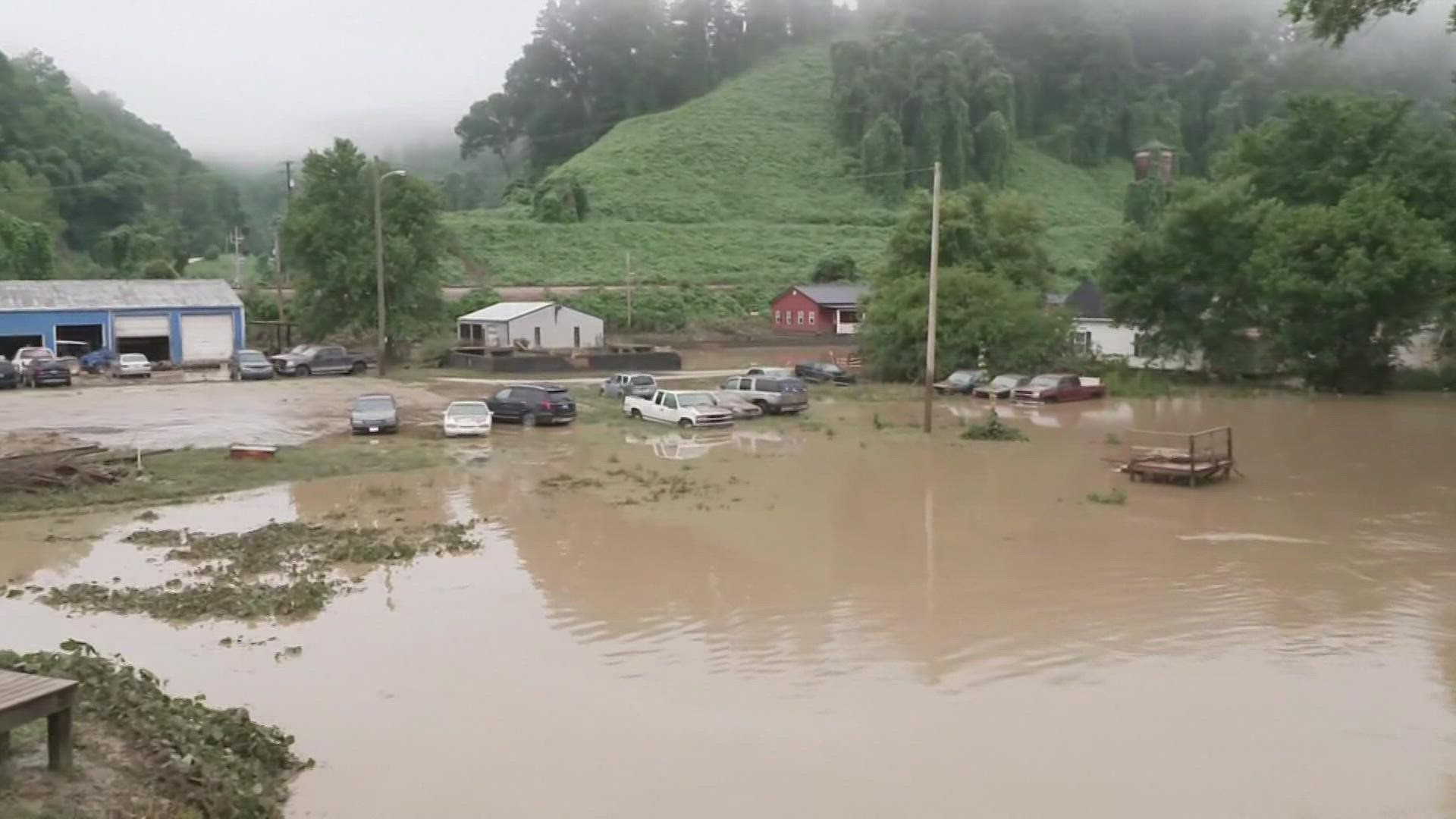LAKEWOOD, Colo. — A thousand-year flood means that there is a one in a thousand chance of a flood that big happening in any given year. In terms of probability, it means there's a 0.1% chance of happening in any given year.
In the last 14 days, there have been three 1,000-year floods in the U.S., Kentucky, St. Louis, and Death Valley.
“We’re going to get more storms and we are going to get bigger storms than we are expecting,” said Bob Jarrett, a retired hydrologist with the United States Geological Survey (USGS).
Jarrett spent more than 50 years studying the country's biggest floods including the 1972 Agnes flood, 1976 Big Thompson flood, 1982 Lawn Lake flood, the 1997 Fort Collins flood, and the 2013 Front Range floods.
He said we should expect bigger storms in the future, not just because of climate change, but because we may be setting our expectations too low.
"We're just not using all the data that's available to quantify the rainfall frequencies of these storms," he said. "We are preparing ourselves for a worst-case-scenario that is not really the worst case."
Unless the most intense part of a storm actually hits a rain gauge directly, which is very unlikely given how sparsely spaced and small the gauges are, all hydrologists can do is estimate the rainfall.
Jarrett said the current methods of estimating the amount of rainfall, and the rate of rainfall in a storm is somewhat lacking.
The most intense part of a storm can be so localized that even radars can't distinguish the variability of the rainfall. Especially if the radar site is very distant from the storm, or there is a terrain feature partially blocking the reflection of the data.
Jarrett put together a more complete analysis of rainfall data, using what he said is even more extensive that the NOAA Atlas 14 project, which is the most widely accepted data for evaluating flood frequency.
He said there is rainfall data out there that just doesn't get included, and sometimes a scientist just has to go out and find it.
For example, a Bucket Survey is something Jarrett said is a lost art among researchers. It's literally going door-to-door in an area hit by an intense rainstorm or flood, to see if any property owners have rain gauges.
He said there's been many occasions where a rancher measured more rain than we actually though had fallen. It's surprising how many people do measure rainfall but just don't report it.
“I think the data is clearly showing that we are underestimating how big these storms are by 40% to 60%," he said "And that’s an uncertainty level that I am certainly very uncomfortable with.”
Jarrett’s research is not new, but it applies more now than ever. If he’s right, what we are calling a 1,000-year rainstorm, is more likely a 200 or 300-year storm. And a 100-year storm like the one that hit City Park in Denver on Sunday, would be a 50-year storm.
He says the public should know the true potential that today’s rainstorms are really packing. “So that people know how to react when they are suddenly thrust in front of these storms that are occurring in minutes.”
And Jarrett’s calculations don’t even take Climate Change into account. If you add projections from climate models, it would add an additional 10% to 25% more rain on top of the underestimated amounts.
“Back when I was still working, you could send a letter to: Captain Flood Denver Federal Center, and it would get to me.”
Name any big flood since 1970, and you can bet Bob Jarrett was there. His job with the USGS was to research the storms and the destruction they left behind.
“To see the suffering, it’s hard. It’s hard.”
Now in his retirement, he says the headlines of today are stunning. Three 1,000-year floods in two weeks. Kentucky, St. Louis, and Death Valley.
After dissecting big storms, and big floods for more than 50 years, Jarrett’s research is pointing towards more trouble.
“We’re going to get more storms and we are going to get bigger storms than we are expecting.”
He says that storms are already dropping heavier rain than we realize.
The most intense part of a storm can easily conceal itself from the measurements of scientists. Eluding rain gauges and even radars.
SUGGESTED VIDEOS: Colorado Weather

